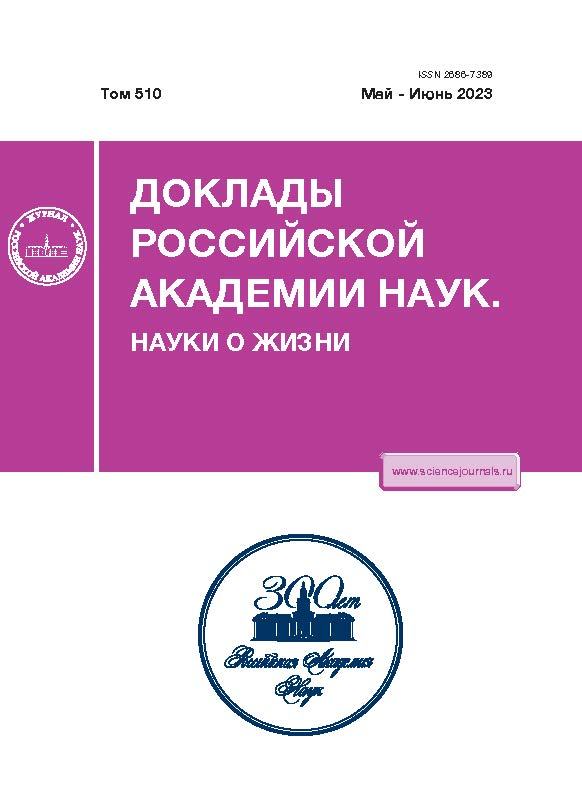NON-SELECTIVE EXPRESSION OF SHORT-WAVELENGTH CONE OPSIN IMPROVES LEARNING IN MICE WITH RETINAL DEGENERATION IN A VISUALLY GUIDED TASK
- Authors: Idzhilova O.S.1,2, Kolotova D.E.1,2, Smirnova G.R.2, Abonakour A.1,3, Dolgikh D.A.2,4,5, Petrovskaya L.E.4, Kirpichnikov A.o.4,5, Ostrovsky A.o.2,5, Malyshev A.Y.1
-
Affiliations:
- Institute of Higher Nervous Activity and Neurophysiology, Russian Academy of Sciences
- Emanuel Institute of Biochemical Physics, Russian Academy of Sciences
- Moscow Institute of Physics and Technology (National Research University)
- Shemyakin and Ovchinnikov Institute of Bioorganic Chemistry, Russian Academy of Sciences
- Biological Faculty, Moscow State University
- Issue: Vol 510, No 1 (2023)
- Pages: 297-302
- Section: Articles
- URL: https://journals.rcsi.science/2686-7389/article/view/135701
- DOI: https://doi.org/10.31857/S268673892360005X
- EDN: https://elibrary.ru/QHNHBW
- ID: 135701
Cite item
Abstract
Here, we explore the potential of an animal opsin non-selectively expressed in various neuronal elements of the degenerative retina to restore impaired visual function. In this study, a knockout murine model of inherited retinal distrophy was used. Animals were injected intravitreally with either a virus carrying gene of the short-wavelength cone opsin associated with a reporter fluorescent protein, or a control virus carrying the sequence of a modified fluorescent protein that had an enhanced membrane tropism. The viral transduction induced pronounced opsin expression in ganglion, bipolar, and horizontal retinal neurons. Behavioral testing of the treated mice in the visually guided task in the trapezoid Morris water maze showed a partial recovery of learning ability in animals whose retinas had been transduced with the cone opsin.
About the authors
O. S. Idzhilova
Institute of Higher Nervous Activity and Neurophysiology, Russian Academy of Sciences; Emanuel Institute of Biochemical Physics, Russian Academy of Sciences
Email: malyshev@ihna.ru
Russian Federation, Moscow; Russian Federation, Moscow
D. E. Kolotova
Institute of Higher Nervous Activity and Neurophysiology, Russian Academy of Sciences; Emanuel Institute of Biochemical Physics, Russian Academy of Sciences
Email: malyshev@ihna.ru
Russian Federation, Moscow; Russian Federation, Moscow
G. R. Smirnova
Emanuel Institute of Biochemical Physics, Russian Academy of Sciences
Email: malyshev@ihna.ru
Russian Federation, Moscow
A. Abonakour
Institute of Higher Nervous Activity and Neurophysiology, Russian Academy of Sciences; Moscow Institute of Physics and Technology (National Research University)
Email: malyshev@ihna.ru
Russian Federation, Moscow; Russian Federation, Dolgoprudny
D. A. Dolgikh
Emanuel Institute of Biochemical Physics, Russian Academy of Sciences; Shemyakin and Ovchinnikov Institute of Bioorganic Chemistry, Russian Academy of Sciences; Biological Faculty, Moscow State University
Email: malyshev@ihna.ru
Russian Federation, Moscow; Russian Federation, Moscow; Russian Federation, Moscow
L. E. Petrovskaya
Shemyakin and Ovchinnikov Institute of Bioorganic Chemistry, Russian Academy of Sciences
Email: malyshev@ihna.ru
Russian Federation, Moscow
Academician of the RAS M. P. Kirpichnikov
Shemyakin and Ovchinnikov Institute of Bioorganic Chemistry, Russian Academy of Sciences; Biological Faculty, Moscow State University
Email: malyshev@ihna.ru
Russian Federation, Moscow; Russian Federation, Moscow
Academician of the RAS M. A. Ostrovsky
Emanuel Institute of Biochemical Physics, Russian Academy of Sciences; Biological Faculty, Moscow State University
Email: malyshev@ihna.ru
Russian Federation, Moscow; Russian Federation, Moscow
A. Yu. Malyshev
Institute of Higher Nervous Activity and Neurophysiology, Russian Academy of Sciences
Author for correspondence.
Email: malyshev@ihna.ru
Russian Federation, Moscow
References
- Островский М.А., Кирпичников М.П. Перспективы оптогенетического протезирования дегенеративной сетчатки глаза // Биохимия, 2019. Т. 84. № 5. С. 634–647.
- Sahel J., Marazova K., Audo I. Clinical characteristics and current therapies for inherited retinal degenerations // Cold Spring Harbor Perspectives in Medicine, 2014. V. 5. № 2. P. a017111.
- Bi A., Cui J., Ma Y., et al. Ectopic expression of a microbial-type rhodopsin restores visual responses in mice with photoreceptor degeneration // Neuron, 2006. V. 50. № 1. P. 23–33.
- Tomita H., Sugano E., Yawo H., et al. Restoration of visual response in aged dystrophic RCS rats using AAV-mediated channelopsin-2 gene transfer // Investigative Ophthalmology & Visual Science, 2007. V. 48. № 8. P. 3821–3826.
- Doroudchi M., Greenberg K., Liu J., et al. Virally delivered channelrhodopsin-2 safely and effectively restores visual function in multiple mouse models of blindness // Molecular Therapy, 2011. V. 19. № 7. P. 1220–1229.
- Prosseda P., Tran M., Kowal T., et al. Advances in Ophthalmic Optogenetics: Approaches and Applications // Biomolecules, 2022. V. 12. № 2. P. 269.
- Sahel J., Boulanger-Scemama E., Pagot C., et al. Partial recovery of visual function in a blind patient after optogenetic therapy // Nature Medicine, 2021. V. 27. P. 1223–1229.
- Lin B., Koizumi A., Tanaka N., et al. Restoration of visual function in retinal degeneration mice by ectopic expression of melanopsin // Proceedings of the National Academy of Sciences of the United States of America, 2008. V. 105. № 41. P. 16009–16014.
- Berry M., Holt A., Salari A., et al. Restoration of high-sensitivity and adapting vision with a cone opsin // Nature Communications, 2019. V. 10. P. 1221.
- Cehajic-Kapetanovic J., Eleftheriou C., Allen A., et al. Restoration of Vision with Ectopic Expression of Human Rod Opsin // Current Biology, 2015. V. 25. № 16. P. 2111–2122.
- Ермолаева М.Э., Ротов А.Ю., Сопова Ю.В., и др. Механизмы дегенерации сетчатки при пигментном ретините – роль ответа на несвернутый белок. В сб.: Рецепторы и внутриклеточная сигнализация. Под редакцией А.В. Бережнова, В.П. Зинченко. Пущино: ФГБУН ФИЦ “Пущинский научный центр биологических исследований РАН”, 2021. С. 525–530.
- Bowes C., Li T., Danciger M., et al. Retinal degeneration in the rd mouse is caused by a defect in the beta subunit of rod cGMP-phosphodiesterase // Nature, 1990. V. 347. P. 677–680.
- Nishiguchi K., Carvalho L., Rizzi M., et al. Gene therapy restores vision in rd1 mice after removal of a confounding mutation in Gpr179 // Nature Communications, 2015. V. 6. № 1. P. 1–10.
- Prusky G., West P., Douglas R. Behavioral assessment of visual acuity in mice and rats // Vision Research, 2000. V. 40. № 16. P. 2201–2209.
- Gradinaru V., Zhang F., Ramakrishnan C., et al. Molecular and cellular approaches for diversifying and extending optogenetics // Cell, 2010. V. 141. №1. P. 154–165.










